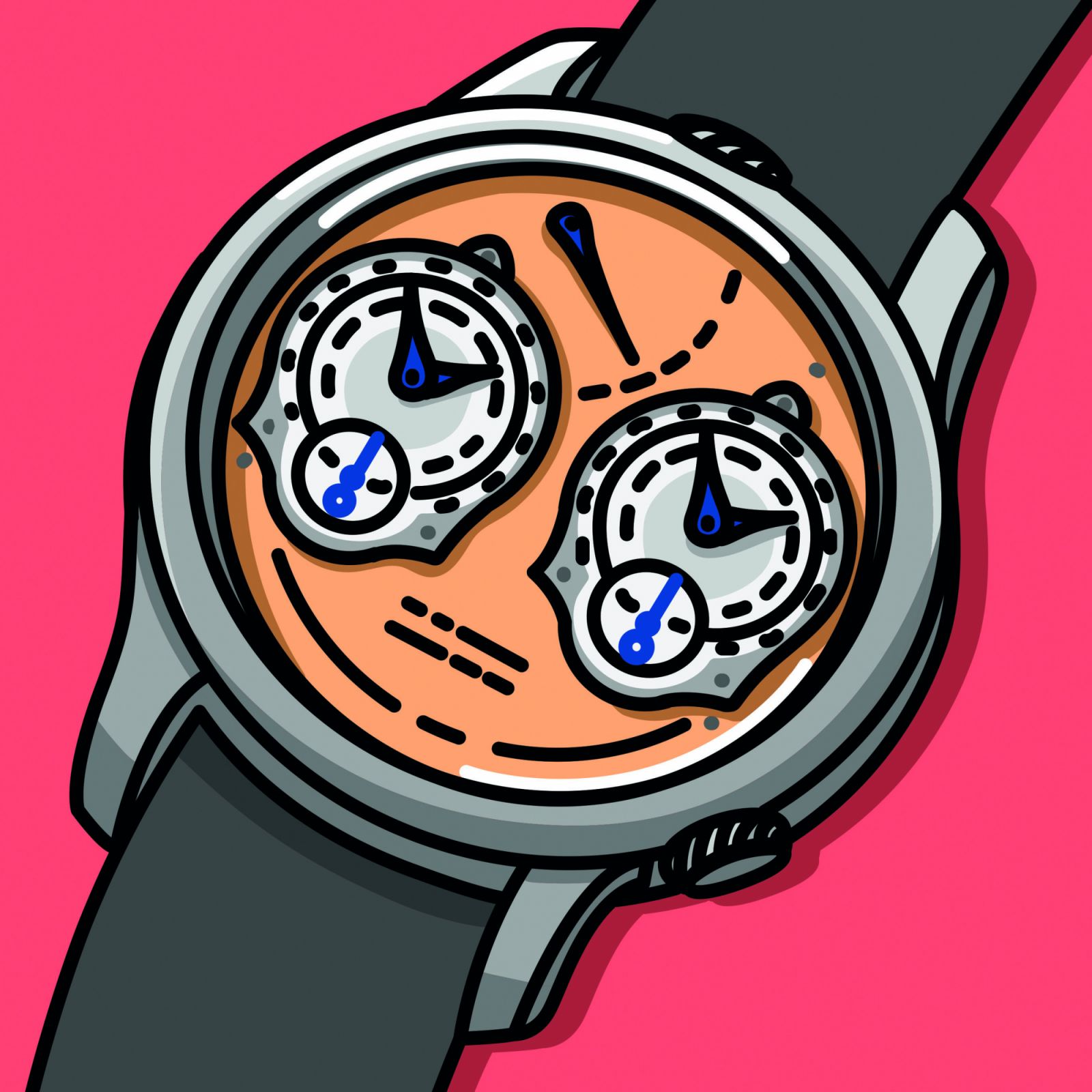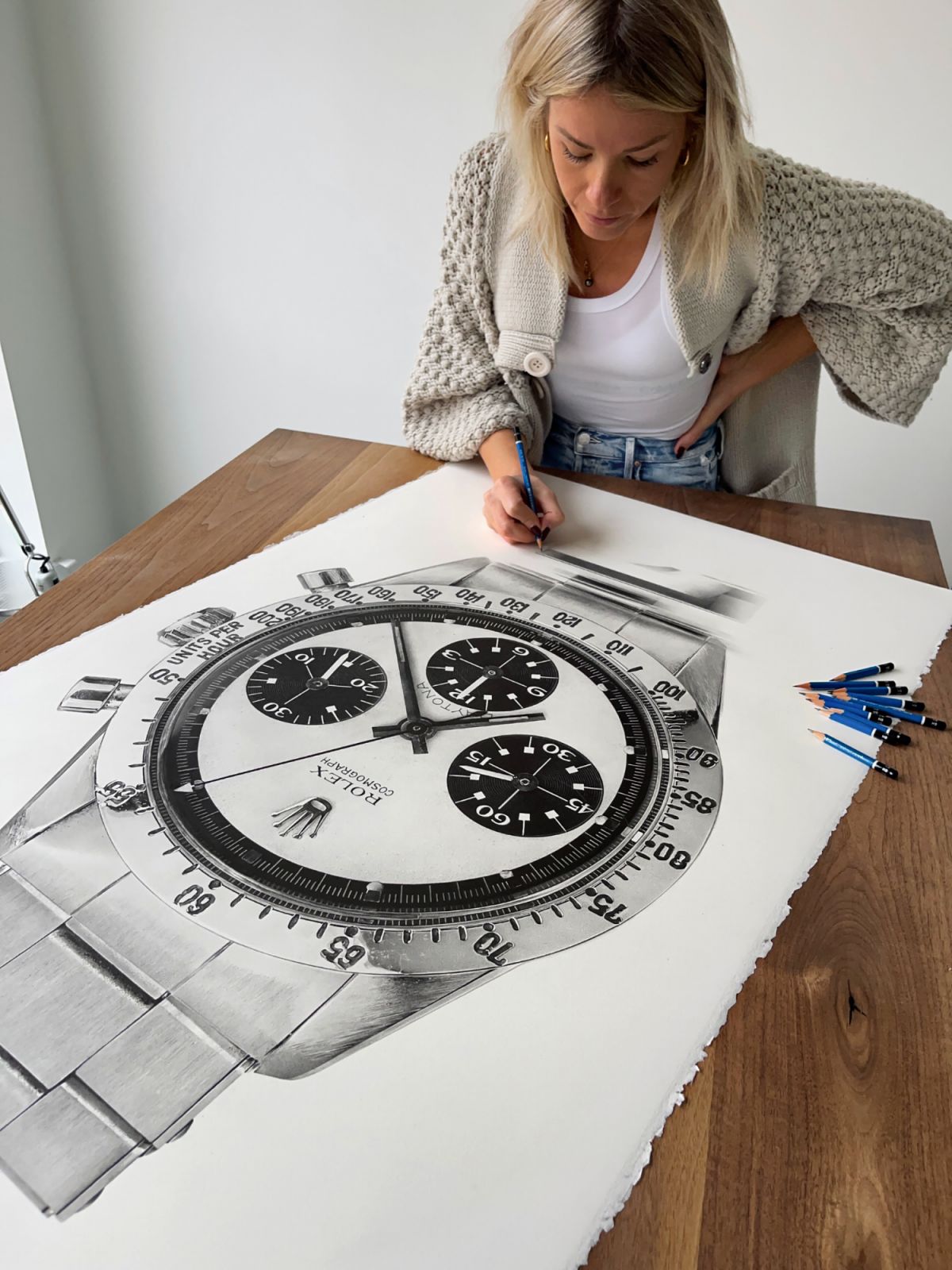A Swatch x Willy Wonka collab? A Richard Mille made of cardboard? No, we’re not talking gibberish, these are actual quirky watch art pieces which are bringing horology into the meme era and giving it a viral twist
Watch enthusiasts are widely seen as stern and serious. They analyse the meticulous mechanics in a Patek Philippe with the solemnity of a monk seeking enlightenment. While an exceptional timepiece deserves appreciation for its technical genius with all the sombreness that traditional, “serious” watch lovers shower on it, there is more than one way to appreciate it.
Take, for example, three “watch artists” we spoke to about finding ways to practise their craft as part of their appreciation of horology. Gabriel Lau, Julie Kraulis and Teun van Heerebeek seek to rewrite—or redraw—the definition of watch appreciation, through painstaking yet playful illustrations and pop art that cleverly transforms watches into sly cultural metaphors, and capture the magic of mechanical timepieces in an accessible, engaging fashion.
Lau was introduced to luxury watches by a friend at university in Toronto and then he started liking the design of “high-end watches—just the grand essence of luxury and how it made me feel,” he says. He bought his first watch in 2010, a Bell & Ross BR 0392, and followed this with a Tudor Black Bay in burgundy, after which he got “heavily into vintage Rolex watches”.
In case you missed it: John Mayer co-designed this new Audemars Piguet Royal Oak

When he first moved to Hong Kong to join his family business in 2014, he says, “I had so much exposure to watches and art because I got to go to Phillips, Christie’s and Sotheby’s auctions, just to look at the real stuff ”. While he already loved the timepieces he saw, he couldn’t afford to buy them, so he decided to “express his passion in a way that was not normal”. He did not want to take a “wristshot like everybody” and put it up on social media; “I wanted to get back in touch with art and design and have a creative outlet, so I combined my passion for watches with my passion for art,” he says. “I wanted to tap into creativity that was innocent, and rough, and show respect to the watches I loved by drawing every single, small detail to show my passion in an artistic form,” he adds. Lau, who is making a name for his recreations of luxury watches made from paper, cardboard and cling wrap, was inspired by abstract artists to reproduce watches he loved “in a very funky way” while capturing all the details. This approach “ blew up”: his work, which he shares on his Instagram account @labeg, has been supported by notable collectors in his city’s watch community. “People ask me to create watches that are sentimental to them, or to create their dream watch,” says Lau, explaining how his works bring joy to those who cannot get their hands on the watches they love, either because they are not available at retail or simply unaffordable.
Canada-based Kraulis is a visual artist who sketches larger-than-life iconic watch references using graphite for her “Making Time” collection. She had been looking for “an area of focus that would keep me interested through tangible and abstract qualities” when she stumbled upon the art of watchmaking, which ticked those boxes for her. “Watches are portals into many different worlds I love, and they capture me on the soul level,” she says. “I fell into watches quite unexpectedly in 2015 after coming across an article about iconic timepieces.”




